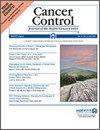Changes in Spinal Instability After Conventional Radiotherapy for Painful Vertebral Bone Metastases
IF 2.5
4区 医学
Q3 ONCOLOGY
引用次数: 0
Abstract
Objective: Precise assessment of spinal instability is critical before and after radiotherapy (RT) for evaluating the effectiveness of RT. Therefore, we retrospectively evaluated the efficacy of RT in spinal instability over a period of 6 months after RT, utilizing the spinal instability neoplastic score (SINS) in patients with painful spinal metastasis. We retrospectively evaluated 108 patients who received RT for painful vertebral metastasis in our institution. Mechanical pain at metastatic vertebrae, radiological responses of irradiated vertebrae, and spinal instability were assessed. Follow-up assessments were done at the start of and at intervals of 1, 2, 3, 4, and 6 months after RT, with the pain disappearing in 67%, 85%, 93%, 97%, and 100% of the patients, respectively. The median SINS were 8, 6, 6, 5, 5, and 4 at the beginning and after 1, 2, 3, 4, and 6 months of RT, respectively. Multivariate analysis revealed that posterolateral involvement of spinal elements (PLISE) was the only risk factor for continuous potentially unstable/unstable spine at 1 month. In conclusion, there was improvement of pain, and recalcification results in regaining spinal stability over time after RT although vertebral body collapse and malalignment occur in some irradiated vertebrae. Clinicians should pay attention to PLISE in predicting continuous potentially unstable/unstable spine.疼痛性椎体骨转移瘤常规放疗后脊柱不稳定性的变化
目的:在放疗(RT)前后对脊柱不稳定性进行精确评估对于评价放疗效果至关重要。因此,我们利用脊柱不稳定性肿瘤评分(SINS)对疼痛性脊柱转移瘤患者在 RT 术后 6 个月内脊柱不稳定性的疗效进行了回顾性评估。我们对本机构接受 RT 治疗的 108 名疼痛性脊椎转移患者进行了回顾性评估。对转移椎体的机械性疼痛、照射椎体的放射学反应和脊柱不稳定性进行了评估。分别有67%、85%、93%、97%和100%的患者疼痛消失。在 RT 开始时和 RT 1、2、3、4、6 个月后,SINS 的中位数分别为 8、6、6、5、5 和 4。多变量分析显示,脊柱后外侧受累(PLISE)是1个月时脊柱持续潜在不稳定/不稳定的唯一风险因素。总之,尽管部分照射椎体出现椎体塌陷和错位,但随着时间的推移,疼痛有所改善,椎体再钙化使脊柱恢复稳定。临床医生在预测连续的潜在不稳定/不稳定脊柱时应注意PLISE。
本文章由计算机程序翻译,如有差异,请以英文原文为准。
求助全文
约1分钟内获得全文
求助全文
来源期刊

Cancer Control
ONCOLOGY-
CiteScore
3.80
自引率
0.00%
发文量
148
审稿时长
>12 weeks
期刊介绍:
Cancer Control is a JCR-ranked, peer-reviewed open access journal whose mission is to advance the prevention, detection, diagnosis, treatment, and palliative care of cancer by enabling researchers, doctors, policymakers, and other healthcare professionals to freely share research along the cancer control continuum. Our vision is a world where gold-standard cancer care is the norm, not the exception.
 求助内容:
求助内容: 应助结果提醒方式:
应助结果提醒方式:


